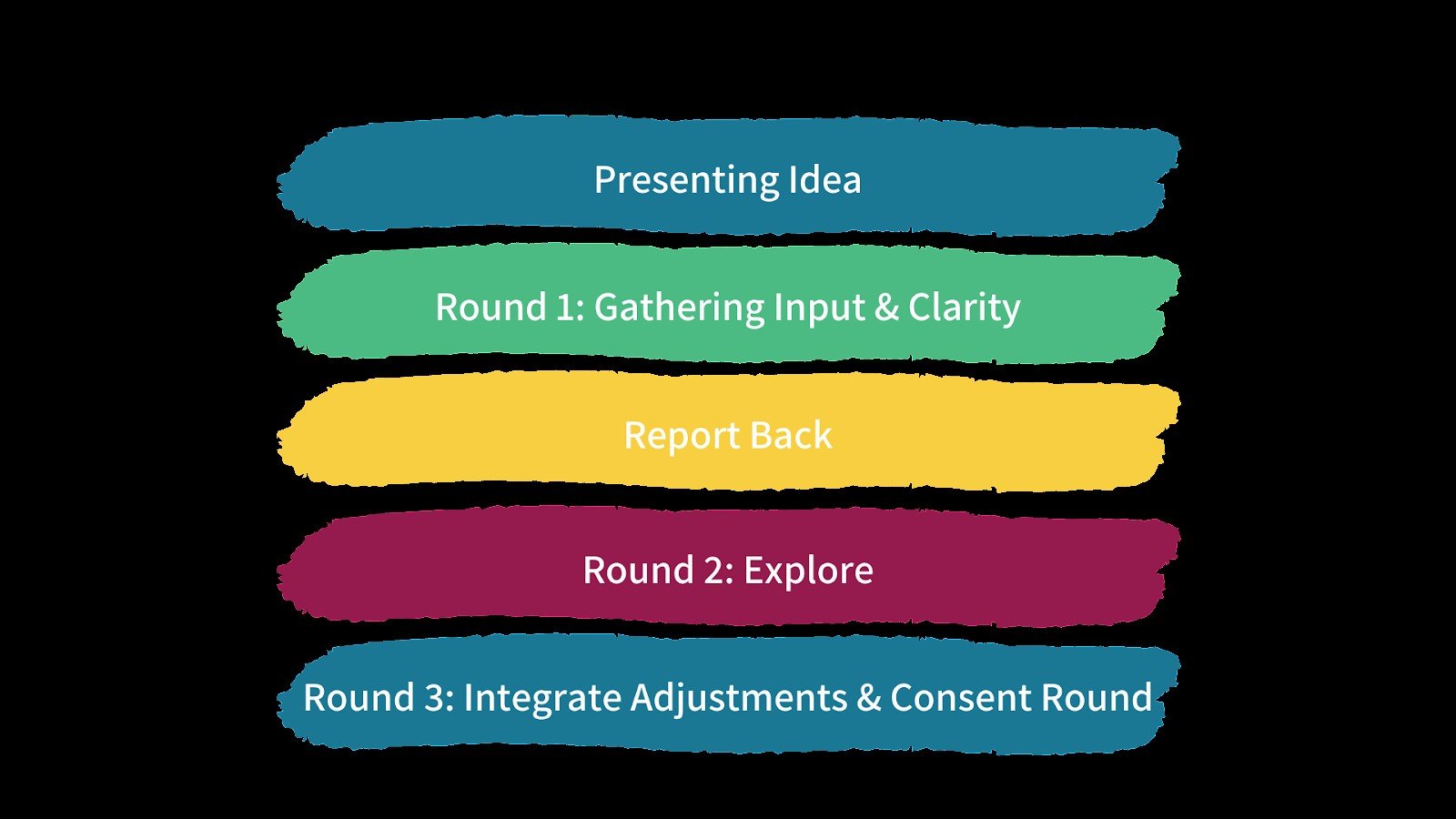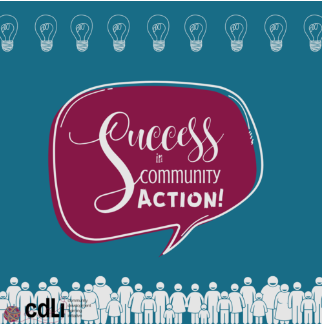Success in Community Action Training Winter 2022: Reflections from a Learner
BY SUKHMAN HEHAR
Social work student Reflection
The Success in Community Action training was my first experiential learning at CDLI which provided me with tools to take back to the communities I am involved with and also with a unique sense as a student of social work. From this training, I was able to think about community development in different ways I had not thought of before. I wanted to share my reflections on the sociocracy model, the Golden Circle, and the head, hearts, and hands (HHH) model when thinking about community development.
How did we create an open space virtually?
One of the most valuable aspects I find for CDLI is how we begin every event and conversation by having a land acknowledgement to honour the sacred history of the Indigenous people in Calgary and the emphasis to creating an ethical space. The guidelines for how to create an ethical space helps promote openness, respect, and diversity; and embodies the practices of justice, liberation, and peace in our engagements with each other. When I think of ways to engage participants online, having guidelines to create an ethical space goes a long way to create a sense of belonging and respect.
a learning experience where we learn from each other
Everyone is encouraged to sign up for the land acknowledgement and co-facilitation. The environment is one in which learning from each other is encouraged.
This eight-week training focuses on different topics each week:
Strengthening Our Communities
Great Community: Why, How, What
Complexity Root Causes
Community Strengths And Assets
Relationship Building And Trust In Community
Working With Conflict
Identifying And Celebrating Success
And From Ideas To Action
What is the sociocracy model?
We discussed how this would look like when working together on a community garden. This process emphasizes a decision-making process that involves everyone.
In my perspective, this model hopes to bring into understanding about what power is. When I contemplate how this looks like in community work, I think about what a strong leader looks like. I think about how in my current role as a social work student, I can practice this idea of power dissemination when working in teams and groups.
Our practice as a group in SICA with the sociocracy process was a tool that allowed us to involve everyone’s opinions and giving space for clarity.
The sociocracy decision-making process. We practiced this with an example of building a community garden and discussed the factors around that. I can think of further using this model when working in teams that have many facets of opinions to include and give room to everyone.
The Golden Circle
Next, the Golden Circle was a rewarding tool for us to really think about why we are doing the work we are doing.
We had opportunities to do our own individual reflection throughout the training which made it personable and got us to apply it back to our practices.
I thought about community initiatives that I am currently a part of, such as the Walk Away Hunger Campaign, that gets the entire community together to support the Calgary Food Bank by increasing donations. I thought about how important it is for me to take the time out to participate and involve everyone around me, and even though it is time-consuming, it’s my why.
The Golden Circle by Simon Sinek
Complexity & Root Causes. simple vs. complex challenges in community
Simple challenges are like baking a cake, complicated challenges are similar to building a rocket, and complex challenges are like raising a child. We discussed how at times, actions and outcomes are easily observable, such as in a simple challenge, whereas in a complex challenge, the relationship between action and outcome may only be able to noticeable after (as shared by Frances Westley, Brenda Zimmerman, and Michael Quinn Patton in “Getting to Maybe: How the World is Changed”).
We discussed how there is not one process that works every time, and it is alright to change our way of working as we evolve, that is, using emergent practices, and also relying on others’ knowledge to support us.
“Community work is a complex challenge, where we may put work into the community, but we may not see the outcome as clearly. ”
I wanted to share this specific learning because in the past at times when I have felt burnt out, or at a loss of why I wasn’t seeing the results I needed to see, I realize I may have been using a simple challenge understanding of a complex challenge, where, as the project grows and adapts, so does the way I approach it adapts. Collective knowledge is a part of the complex challenge , which to me looks like many moving parts that make up a whole, similar to the social work systems theory.
“There IS no process that works every time, and I cannot control all of the parts.”
Head, Hands, and Heart Model
One of the most meaningful activities for me was the head, hands, and heart model (HHH model). Gifts of the head are those of knowledge, where we ask ourselves “What do you know about? What specific area of expertise do you have?”. Gifts of the hands are skills “What are you able to do? What are you able to make?”. Gifts of the heart are those of passions and interests “What do you care deeply about? What motivates you?”.
This tool is a difficult one at times for me to figure out what my skills look like and I had fun utilizing this in breakout rooms and team settings as a way to come together and value each others skills. We used colourful stickies virtually through the slides and had fun with placing our skills at either the head, hand, or heart of the stick figure. This is one activity that we have used in our discussion as a team in CDLI and that I look forward to applying to other teams that I have been on. This activity helps us to think about what our strengths are in different aspects.
One example of asset-mapping I got to see in action was the neigbourhood asset mapping tool which I got the chance to explore during a Jane’s Walk. We discussed how art, beautiful older trees, and greenery in the Mount Pleasant community are all strengths and assets, read about it here. I also helped facilitate the Martindale Jane’s Walk, which you can read about here. This was a creative and engaging way to build community and have discussions around strength-based community develop. I appreciated both this activity and the head, hands, and heart model because it is a unique way to discuss strengths that is more engaging for everyone.
relationship building and trust in community
We had a discussion about these two questions “What does it mean to be in relation with one another? How do we build and deepen relations in our communities?”. When I think about these two questions, I think about how we discussed a quote:
“Move at the speed of trust. Focus on critical connections more than critical mass—build the resilience by building the relationships”
I’ve been thinking about what relationship building and trust looks like in environments outside of close relationships. I’ve thought about what professionalism looks like, and have reevaluated the idea of how I engage in interactions. In my opinion, I feel we have been taught to have a transactional relationship when working together, and that time is considered valuable which is actively being worked on. Spending time building relationships is not seen as worthwhile.
How do we meet each other?
Ta7talíya Michelle Nahanee, in her workbook “Decolonize…” writes about professionalism. She writes that conditioned external pressure can look like rules about how quickly to “get down to business”. It may seem too personable spending ten minutes in a thirty minute meeting getting to know someone to better build a relationship with them. She also writes about how this is a decolonial way of being and can also be seen as a analytical framework for colonial conditioning which has trained us to compete and compare. Putting relations at the centre of your life personal and professional life will change how we make decisions and what we prioritize. This is powerful. And how I believe we can protect ourself and who we choose to be vulnerable with, is by moving at the speed of trust.
Decolonize First and Decolonize ..., a recalibrating guide & workbook by Ta7talíya Michelle Nahanee
Community Members Wisdom Sharing
The last week of the SICA training, we were fortunate to have three speakers share their experience of community. They were asked a two questions.
One thing that stood out to me is how they are so passionate about community work, but it comes naturally for them, it was role-modelled to them, and it was a part of their life because they saw something that they wanted to change and put their efforts into creating a change.
I’ve lived in Calgary for most of my life and I feel there are so many leaders and community members who I did not know about at all. What I took away from this session is how empowering it is to hear about others supporting their community through grassroots projects and stepping up as leaders when they saw that a change was needed.
I would recommend the Success in Community Action training program for anyone who is wanting to connect with like-minded individuals to get support that they can take back to their own communities. The tools I learned about such as power dynamics and the sociocracy model, the Golden Circle, and the head, hands, and heart model challenged me to rethink and reflect on how I show up in the present moment and what success looks like.
For updates about the Success in Community Action program, you can click here for the link.











